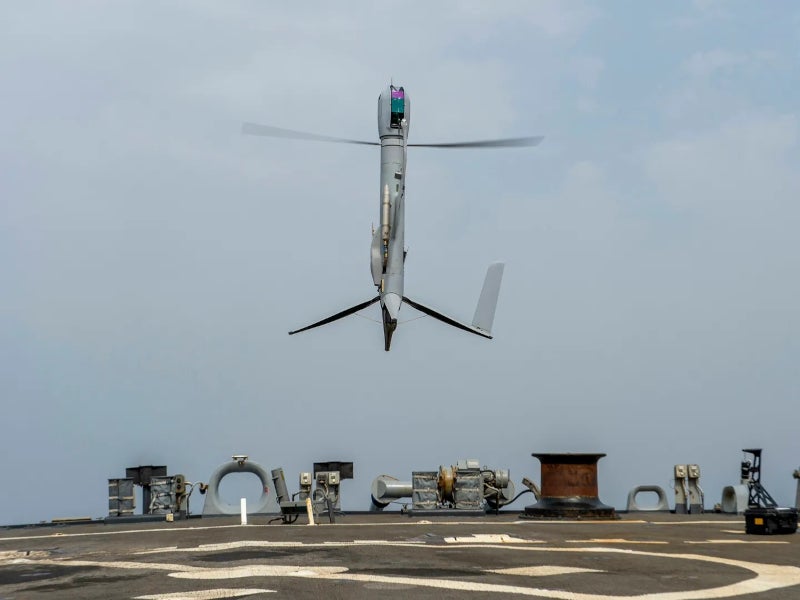Flexrotor is an advanced Group 2-sized small tactical unmanned aerial system (STUAS) with vertical take-off and landing (VTOL) capability, developed for the US and allied forces by Aerovel, a part of Airbus.
Airbus Helicopters, the helicopter manufacturing division of Airbus, acquired Aerovel and its Flexrotor UAS, as part of its strategy to enhance its portfolio of tactical unmanned solutions in May 2024.
Designed according to the demanding reliability requirements of the US Department of Defense, the Flexrotor can be used for a range of intelligence, surveillance, target acquisition and reconnaissance missions both on land and at sea.
The unmanned aircraft is also suitable for civil applications such as weather reconnaissance, geological surveys, environmental monitoring, fishery surveillance, and offshore patrol.
It offers a combination of small size, large payload/range, economy, autonomy, and basing flexibility.
Flexrotor STUAS development details
The flight test of the first prototype, Pandora, began in September 2010.
It was later transitioned between hover and wing-borne cruise, allowing it to combine VTOL with a range of 3,000km and endurance of more than 1.5 days in August 2011.
In November 2014, Aerovel received approval from the US Government to export Flexrotor to global civil operators without any restrictions under International Traffic in Arms Regulations.
The company secured a launch order for Flexrotor from Precision Integrated Programs of Newberg, Oregon, in January 2015.
In October 2018, Aerovel partnered with AeroVironment to offer Flexrotor STUAS for the US Army Family of Tactical UAS programme.
In January 2021, the company conducted demonstrations for US Special Operations Command missions with over 150 cycles on the latest variant of Flexrotor.
Suitable for both maritime and land-based operations, the uncrewed aircraft accumulated 100 cycles over several months in Afghanistan and demonstrated its ability to perform various shipboard operations including law enforcement, commercial fish-spotting in the tropical Pacific, and ice navigation in the Arctic.
In March 2021, Aerovel raised $2.5m in a Series B funding round from undisclosed lenders in aviation to support growth, increase production capacity and employ more engineers for its Flexrotor UAS project.
The company integrated a new heavy fuel engine (HFE) into Flexrotor in January 2024.
The initial batch of Flexrotor units equipped with HFE is scheduled for deployment with the US Navy’s 5th Fleet and Task Force 59, as part of the low-rate initial production phase.
Flexrotor STUAS design and features
The Flexrotor unmanned system is a force multiplier which can enhance operational capabilities in harsh, high-threat environments where GPS is unavailable.
It has an overall length of 2.1m, a height of 1.7m, a wingspan of 3m, and an empty weight of 14kg. It has two puller rotors with a rotor diameter of 2.2m.
Requiring just a 20ft by 20ft space for launch and recovery, it can take off and land vertically, smoothly transitioning into horizontal wing-borne flight.
Fitted with folding legs, the STUAS requires nominal support equipment and can be operated from confined spaces on land.
The STUAS operates entirely autonomously after take-off, requiring no pilot intervention.
The Flexrotor can be quickly assembled for flight in ten minutes by a maximum of two crew members while the setup time required for the base equipment is nearly 15 minutes.
It can be disassembled within minutes and stored by a single person. The VTOL UAV can be easily deployed from its assembly box and can be operated from a small helideck.
It requires data links, antennas and an operator station for maritime operations.
Payloads
The long-endurance VTOL aircraft is equipped with Hood Technology’s Alticam steerable, zoomable imaging turret in its nose to perform search and target tracking, as well as a survey while recording HD imagery onboard for post-flight review.
The turret integrates daylight or infrared cameras for day and night imaging and data-gathering.
Payload options for Flexrotor include meteorological sounding, atmospheric boundary-layer flux measurement, geomagnetic, radar and multispectral imaging, communications relay, an electrooptical system and advanced sensors based on the mission requirements.
The unmanned aircraft is capable of transmitting NTSC/PAL-quality video to the operator’s station over a range of 120km.
The imagery and video can be sent to nearby users such as firefighters on-scene and can be viewed on an iPhone.
Flexrotor STUAS engine and performance
The two-stroke 28cc engine of the Flexrotor has been replaced by a new HFE, featuring advanced fuel mixture control technology.
With a maximum launch weight of 25kg, the aircraft can hold up to 4.2kg of fuel.
The wing-borne and thrust-borne flight speeds of the aircraft are 180km/h and 45km/h, respectively.
It has a loiter speed of 80km/h and a service ceiling of 7km.
The unmanned aircraft offers a maximum endurance of 33 hours with an 8kg payload by using external fuel.
The incorporation of the HFE augments the Flexrotor’s VTOL capabilities, thereby increasing its efficiency, operational range, and suitability for maritime applications.
Contractors involved
Silvus Technologies, a communications system provider, was selected to supply the wireless data link for the Flexrotor unmanned aircraft system in January 2019.
Hood Technology, an imaging solutions provider, provided the HoodTech stabilised imaging system for the unmanned aircraft.









